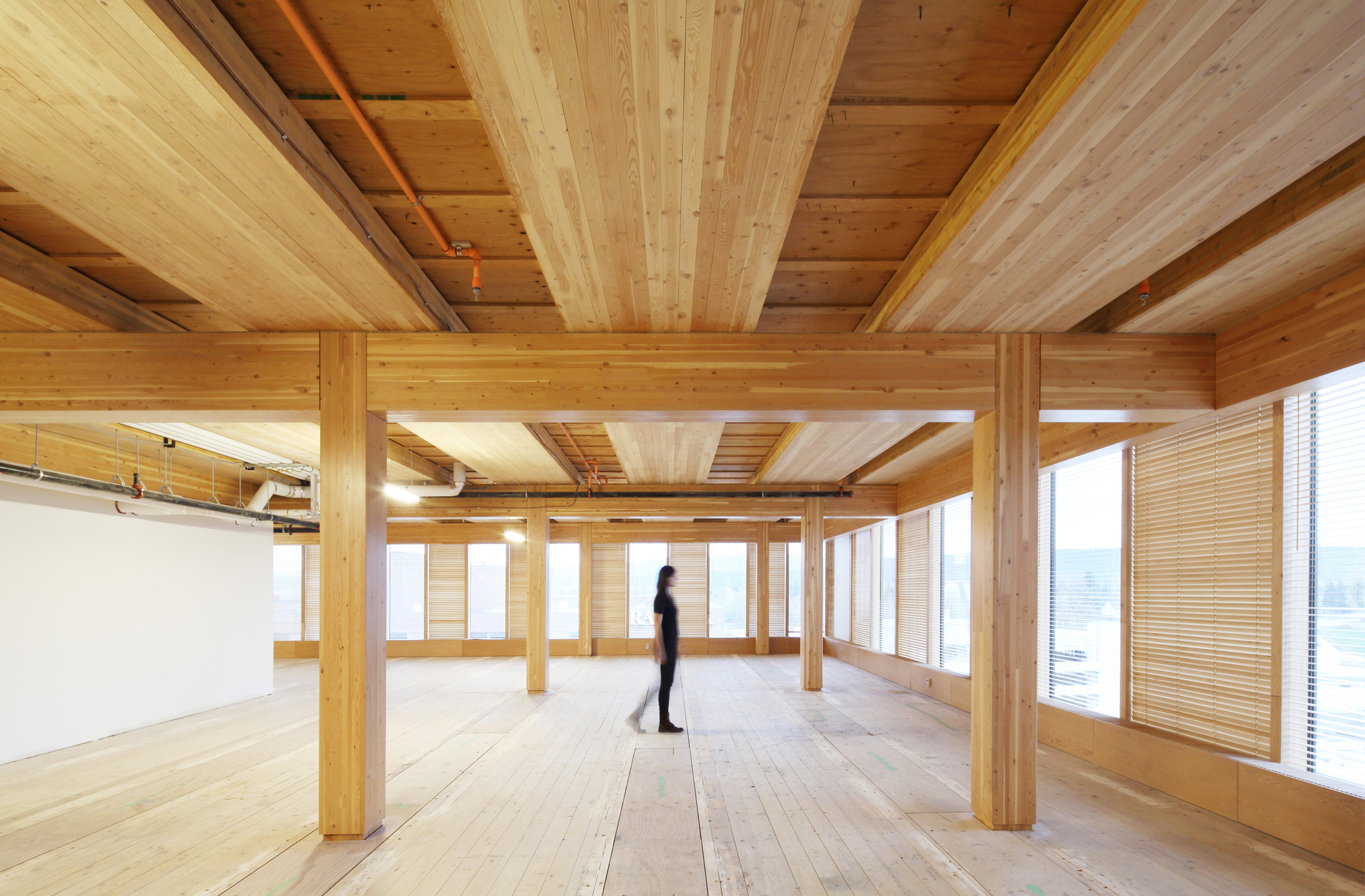The Harvard Real Estate Review is a student-run publication that investigates the intersection between real estate, technology, and design. It operates between multiple disciplines to imagine a future for our homes and cities by developing creative solutions for the problems of the built environment. “Disruption and Resilience,” the ninth and latest issue of the Harvard Real Estate Review, explores humanity’s ability to adapt through various themes such as climate change policy, housing affordability access, and innovative building materials, thus demonstrating the “strength and value” of adaptability “and its impact on our built environment.” The following excerpt was selected from an essay contributed by Ian Grohsgal (MArch ’21), whose interests transverse sustainable design, affordability, real estate development, and technology.
Excerpt from Harvard Real Estate Review:“Transitioning Cross-laminated Timber to an American Context”
by Ian Grohsgal (MArch ’21)
The U.S. construction industry is at a crossroads. Facing shortages of traditional structural materials and a growing imperative to adopt more sustainable practices, builders must adapt. Cross-Laminated Timber (CLT) has the potential to accelerate the sustainability of the built environment, but without a broader awareness of its cost saving potential, it remains an underutilized material in U.S. development projects.
CLT is a subset of the mass timber product category, which includes large, laminated solid wood panels, nail-laminated timber (NLT), and glued-laminated timber (glulam). At its essence, CLT is an engineered wood system constructed from several layers of lumber board, which are stacked crosswise and glued together in an offsite factory. The material is unique in that it leverages the lightweight structure of wood while its crosswise stacking gives it the rigidity and strength of heavier materials. The effect is that CLT has a strength-to-weight ratio that rivals concrete and is quickly deployable in bidirectional spans. CLT is also a highly efficient building material to withstand earthquakes often without the use of more expensive seismic engineering techniques.
As a relatively new entrant into the construction industry, CLT is structurally competitive in larger, regularly shaped buildings where the material’s mass production techniques are most advantageous. Currently, the material is used most effectively in the construction of mid-rise residential and commercial structures as well as low-rise educational, retail, and industrial buildings. CLT is increasingly being deployed in larger and taller buildings, illustrating its potential to challenge the paradigms of the construction industry.
The use of CLT dates to the 1990s where it was engineered and incorporated into construction in Germany and Austria. Leveraging access to plentiful timber and a tradition of timber innovation, the region is home to some of CLT’s largest producers, including Stora Enso and Mayr-Melnhof Holz Holding AG. As green building techniques rose to prominence in the early 2000’s, use of CLT skyrocketed in Europe. With firmly established production, marketing, and distribution capacities, Europe leads the world in CLT adoption. (1)
The global CLT market is small when compared to that of steel or reinforced concrete. In 2016, CLT production totaled $670.2 million USD with expected CAGR (Compound Annual Growth Rate) of 15.1% through 2025. In comparison, the steel and concrete markets are respectively fifty and four-hundred times larger. European developers account for 50% of CLT consumed and have consistently proven the disruptive potential of the material. The question thus arises, why has CLT not taken off in the United States?
While researching the regulations and economics constraining CLT, it becomes clear that CLT in U.S. construction is inhibited by a slow adoption rate of new policies, a lack of awareness of how cost and time savings are achieved, and a less developed network of manufacturing facilities in the supply chain.
Read the full essay in the latest issue of the Harvard Real Estate Review.
(1) Karacabeyli, E. CLT Handbook: Cross-Laminated Timber. Pointe-Claire, Canada: FP Innovations, 2013.
